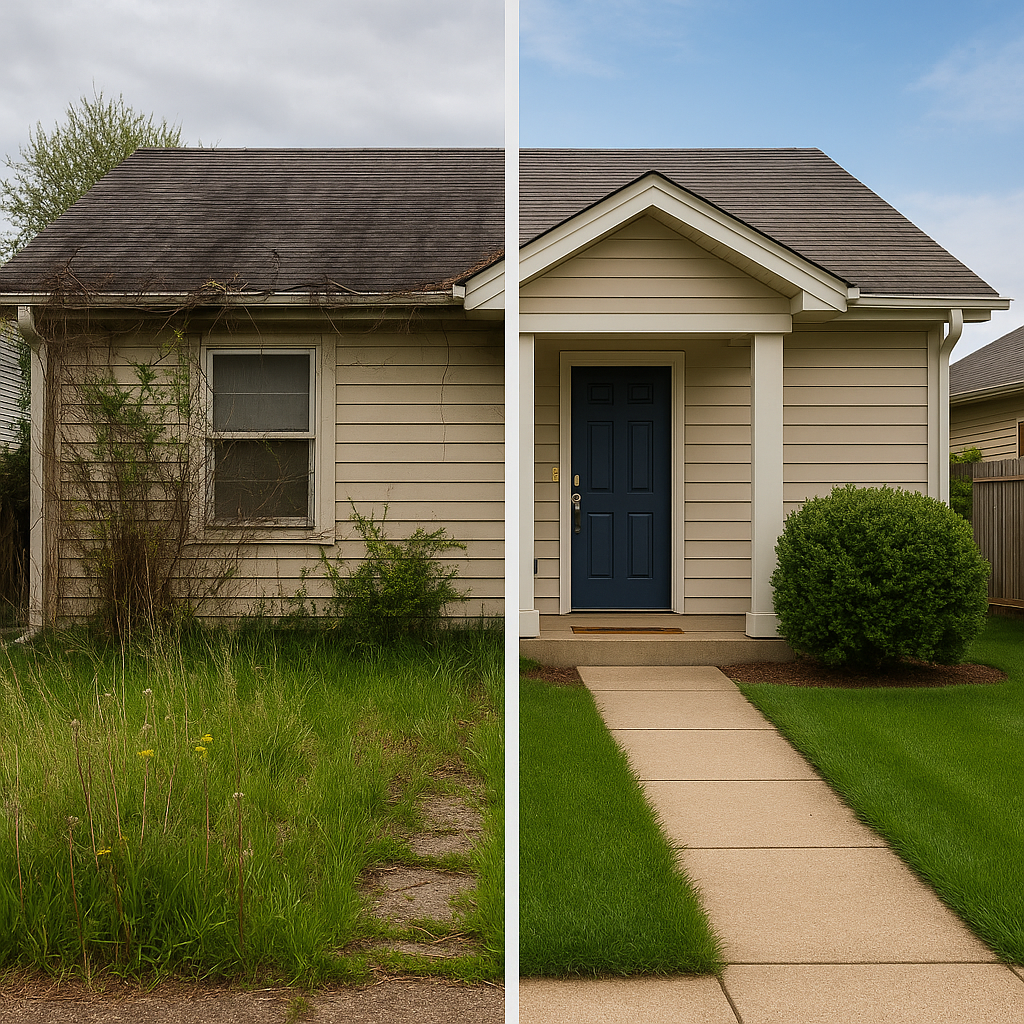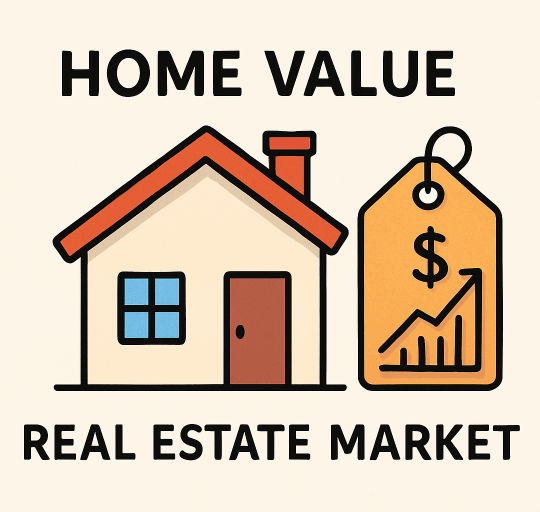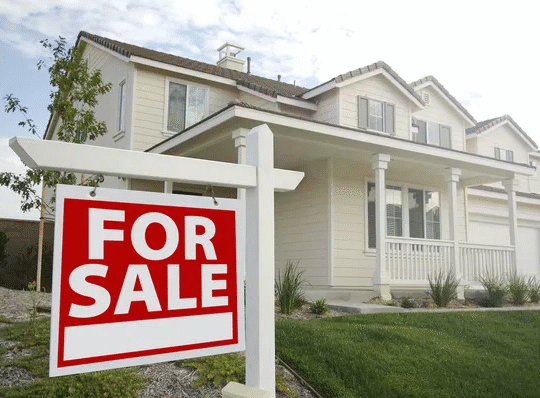Property maintenance is one of those things that’s easy to put off. The grass can wait another week. Those weeds aren’t that bad yet. The gutters will get cleaned eventually. But here’s what most property owners don’t realize until it’s too late – deferred maintenance doesn’t just pause, it multiplies.
What starts as minor neglect turns into major problems faster than anyone expects. A few missed mowing cycles become an overgrown jungle. Ignored debris becomes a breeding ground for pests. Small issues compound into expensive repairs that cost many times more than regular upkeep would have. The financial hit goes beyond just the cleanup costs too, affecting property values, insurance rates, and even legal compliance.
Understanding the real costs of letting maintenance slide helps property owners make better decisions about care and budgeting, whether they’re managing residential or commercial properties.
When Neglect Becomes a Code Violation
Most cities have ordinances about property maintenance. Grass height limits, debris restrictions, and general upkeep standards exist for reasons beyond just aesthetics. When properties fall below these standards, code enforcement gets involved, and that’s where costs start adding up quickly.
Code violation fines vary by location, but they’re never trivial. A first violation for overgrown grass might bring a warning, but subsequent violations rack up daily fines that can reach hundreds or even thousands of dollars. Some municipalities will eventually hire contractors to clean up the property and bill the owner for the work plus administrative fees – and these aren’t competitive bids, so the costs tend to be high.
The worse part? Code violations create public records that can complicate property sales and refinancing. Potential buyers see the violations during title searches, which either kills deals or gives buyers negotiation ammunition to demand lower prices.
The Pest Problem Nobody Wants
Overgrown vegetation and accumulated debris create perfect habitats for pests. Rodents, snakes, insects, and other unwanted visitors move in when properties offer shelter and breeding grounds. Once pests establish themselves, getting rid of them becomes a whole separate expense on top of the cleanup costs.
Termites are particularly concerning because they don’t just live in the yard – they migrate to structures and cause serious damage before anyone notices. Mosquitoes breed in standing water that accumulates around neglected properties. Fire ants build massive colonies in undisturbed soil. Each pest problem requires professional treatment that adds to the growing bill.
Here’s the thing about pest infestations – they affect neighboring properties too, which can lead to complaints, strained relationships with neighbors, and potential liability if the pest problem demonstrably started on the neglected property. Some homeowners associations will fine property owners for pest issues that originate from poor maintenance.
Property Value Takes a Direct Hit
Real estate value isn’t just about the house itself. Curb appeal and overall property condition significantly influence what buyers will pay and whether they’ll even consider making an offer. A property that screams “neglected” automatically loses value, sometimes by tens of thousands of dollars depending on the market and property type.
Appraisers note deferred maintenance in their reports. Lenders see the red flags and may refuse financing or require repairs before closing. Buyers factor in cleanup and restoration costs, then demand prices well below market value to compensate for the work they’ll need to do. The good news is that thorough Property Clean Up services can quickly bring properties back to attractive, marketable condition – and catching issues before they become serious saves both time and money in the recovery process.
Commercial properties suffer even more dramatically. Tenants won’t lease spaces in poorly maintained buildings. Existing tenants may break leases or demand rent reductions. Retail locations lose foot traffic when the property looks run-down. The income loss compounds the maintenance costs, creating a downward spiral that becomes increasingly expensive to reverse.

Insurance Complications and Increased Premiums
Insurance companies care about property maintenance because neglect increases their risk. Overgrown trees near structures pose storm damage risks. Accumulated debris creates fire hazards. Poor maintenance suggests the owner might not properly maintain other aspects of the property, including critical systems like roofing and plumbing.
Some insurance carriers will drop coverage on properties that fall into severe disrepair. Others raise premiums significantly or add exclusions that limit coverage for damage related to deferred maintenance. Getting new insurance on a neglected property becomes difficult and expensive, with fewer carriers willing to take on the risk.
If damage does occur – say a tree falls on the house during a storm – insurers may deny claims if they can prove the damage resulted from lack of maintenance rather than the storm itself. That dead tree that should have been removed years ago? The insurance company isn’t paying for the damage it caused when it finally fell.
The Compounding Effect on Major Systems
Property maintenance isn’t just about appearance. Neglected gutters overflow and dump water against foundations, leading to cracks and moisture intrusion. Overgrown vegetation holds moisture against siding and creates conditions for rot and mold. Tree branches rubbing on roofs damage shingles and create leak points.
These problems develop slowly and aren’t always visible from casual observation, but they’re happening constantly on poorly maintained properties. By the time symptoms become obvious inside the building – water stains, musty smells, cracked walls – the damage is already substantial and expensive to repair.
Foundation repairs can easily run into five figures. Mold remediation costs thousands even for moderate cases. Replacing rotted framing and siding adds up fast. All of these problems trace back to exterior maintenance that didn’t happen when it should have. Regular upkeep prevents these issues, but once they develop, the repair costs dwarf what preventive maintenance would have cost.
Time Costs More Than Money
Beyond direct financial costs, neglected property maintenance steals time. A property that gets behind on care doesn’t just need one good cleanup – it needs extensive work to restore it to proper condition. What might have been a few hours of routine maintenance becomes days or weeks of intensive labor.
For property owners trying to DIY the catch-up work, weekends disappear into clearing overgrowth, hauling debris, and tackling accumulated projects. The physical toll shouldn’t be underestimated either – clearing severely overgrown properties is hard, often dangerous work that leads to injuries when people aren’t prepared for the scope of effort required.
Even hiring professionals to handle neglected properties takes time. Scheduling, supervising, and coordinating work all demand attention. If the property has gotten bad enough, multiple contractors might be needed for different aspects of restoration, each requiring separate coordination.
The Recovery Process Gets More Expensive
Here’s what catches people off guard about recovering from deferred maintenance – costs increase exponentially, not linearly. A property that’s one month behind on mowing might cost twice the normal rate to catch up. A property that’s six months behind might cost ten times normal rates because of the equipment needed, disposal fees for massive amounts of vegetation, and time required to work through the overgrowth.
Disposal fees alone can shock property owners. Routine yard waste pickup doesn’t handle the volume generated by major cleanup projects. Renting dumpsters, hauling material to dumps, and paying disposal fees by weight or volume adds hundreds or thousands to cleanup costs depending on accumulation levels.
Equipment access becomes an issue too. Severely neglected properties often can’t be maintained with standard lawn equipment. Brush clearing equipment, stump grinders, or even heavy machinery might be necessary to restore the property to manageable condition. This specialized equipment comes with premium pricing.
The Smart Financial Choice
Looking at all these potential costs makes the math pretty clear – regular maintenance is always cheaper than deferred maintenance plus recovery. A property that receives consistent care avoids code violations, maintains its value, keeps insurance rates reasonable, and prevents major system damage.
The upfront cost of regular maintenance feels like an expense, but it’s actually insurance against much larger costs down the road. Property owners who treat maintenance as an investment rather than an expense protect their property values and avoid the financial hits that come with letting things slide. Catching up after neglect costs more in every measurable way – financially, legally, and in terms of property condition and value. The lesson is simple: pay for maintenance now, or pay much more for restoration later.





